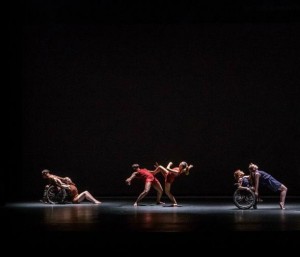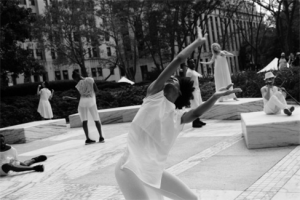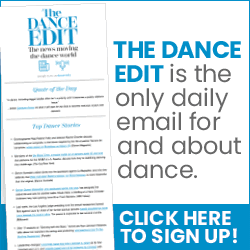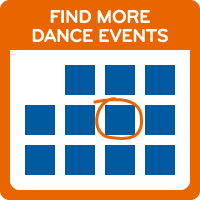Helping Dance Reflect the Diversity of Disability
Wednesday, October 11, 2017
Helping Dance Reflect the Diversity of Disability
A new Dance/NYC initiative is championing integrated performances

Photo: Dancing Wheels Company & School
In 2015, Dance/NYC -- a nonprofit dedicated to promoting dance performance and appreciation in the metropolitan area -- released its Discovering Disability: Data and NYC Dance study. Although the findings weren't necessarily surprising, they were disheartening: People with disabilities are woefully underrepresented in the industry. "After we completed the assessment of the dance workforce, it was indeed clear it does not reflect the demographics of the city when it comes to the disabled population," says Alejandra Duque Cifuentes, Dance/NYC's programs manager. So the organization set out to do something about it by launching Disability. Dance. Artistry., an initiative to advance inclusion and access to the art form for individuals with disabilities.
Christine Bruno -- an actor and director with a disability who has worked as an advocate for more than 12 years -- is part of the DDA's task force. For her, the study was a game changer. "We all knew disabled artists were underrepresented," she says. "But you need hard data for people to pay attention."
Happily they're starting to. The Ford Foundation partnered with Dance/NYC to create the DDA Fund to foster dance performances by and with artists with disabilities. Over the next six months, dance lovers can check out work by some of the grant recipients, including Full Radius Dance (October 13-14), AXIS Dance Company (November 16-18), Jess Curtis & Claire Cunningham (January 10-13, 2018), and Kinetic Light (March 19-25, 2018). "They're not just receiving funds because they include disabled artists, but because the work they're doing is of artistic value," Cifuentes notes. "They're grappling with issues through excellent artistry."

Photo: Heidi Latsky Dance by Charlotte Jones
Cifuentes says watching these inclusive companies has enhanced her knowledge of and appreciation for artists with disabilities, and she hopes other dance fans will have a similar awakening. "Unlike Christine, I don't have three decades advocating for disability," she says. "So I've been struck by how the artists engage in such a critical, constructive way. The first company that brought this out for me was Heidi Latsky Dance," whose repertoire includes The GIMP Project, a series of dance works featuring "unconventional casts," including a bilateral amputee. "The intentionality behind the art-making blew me away. Heidi's work isn't focused on the idea of 'despite of' that so many ableists highlight. Or take Kinetic Light," a collaboration between three artists who use wheelchairs: dancer/ choreographer Alice Sheppard, dancer Laurel Lawson, and lighting and projection designer Michael Maag. "Their work is defined by all the ways scenery and technology are useful for storytelling. That redefines what a disabled dancer is and isn't 'allowed' to do on stage."
In addition to the performances, the DDA hopes to impact the dialogue around dance and disability by hosting a series of conversations with advocates, and educating artists and audiences about appropriate terminology; for example: wheelchair user not wheelchair-bound, or putting the individual first and the disability second, as in a person who is blind instead of a blind person. "It's important because the way we use language creates concepts, which work their way into legislation and policies, as well as how people categorize and judge others' experiences," says Cifuentes. "The cultural reality is that the world is made for and structured to benefit those without disabilities. By nature, that creates an exclusion of people with disabilities. Ableist language is a huge component we are focusing on."
Bruno, who helped choose the DDA Fund's grantees, admits that advocating for inclusion in dance, as opposed to other artistic disciplines, can be particularly challenging. "Sometimes dance offers a very specific idea of what 'dance' is," she says. "That's an even harder nut to crack with implicit bias. When a dance artist can break through that for an audience member used to seeing 'traditional' dance, that's huge. The DDA Fund recipients have that ability."
Visit Dance/NYC's site for a complete list of upcoming DDA Fund dance performances.




